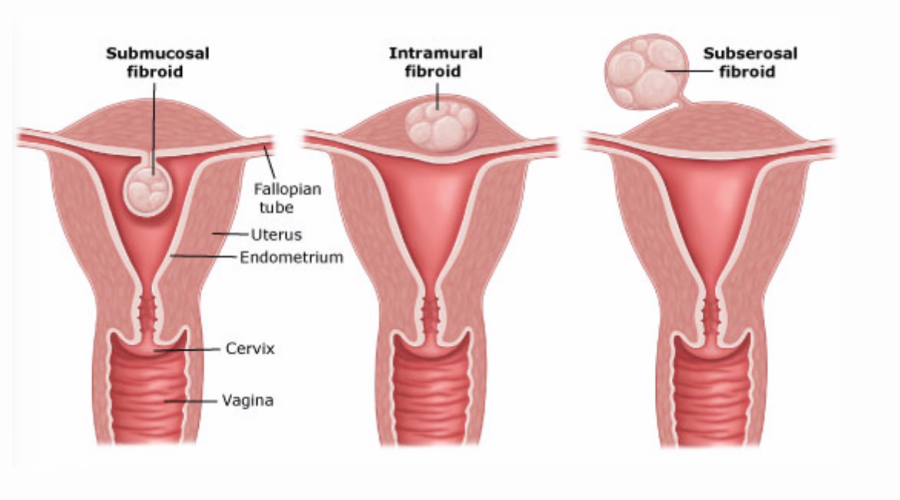Myomectomy (my-o-MEK-tuh-mee) is a surgical procedure to remove uterine fibroids — also called leiomyomas (lie-o-my-O-muhs). These common noncancerous growths appear in the uterus, usually during childbearing years, but they can occur at any age.
The surgeon's goal during myomectomy is to take out symptom-causing fibroids and reconstruct the uterus. Unlike a hysterectomy, which removes your entire uterus, a myomectomy removes only the fibroids and leaves your uterus intact.
Women who undergo myomectomy report improvement in fibroid symptoms, including heavy menstrual bleeding and pelvic pressure.
Why it's done
Your doctor might recommend myomectomy for fibroids causing symptoms that are troublesome or interfere with your normal activities. If you need surgery, reasons to choose a myomectomy instead of a hysterectomy for uterine fibroids include:
- You plan to bear children
- Your doctor suspects uterine fibroids might be interfering with your fertility
- You want to keep your uterus
Risks
Myomectomy has a low complication rate. Still, the procedure poses a unique set of challenges. Risks of myomectomy include:
- Excessive blood loss. Many women already have low blood counts (anemia) due to heavy menstrual bleeding, so they're at a higher risk of problems due to blood loss. Your doctor may suggest ways to build up your blood count before surgery.
Many women already have low blood counts (anemia) due to heavy menstrual bleeding, so they're at a higher risk of problems due to blood loss. Your doctor may suggest ways to build up your blood count before surgery.
Studies suggest blood loss is similar between a myomectomy and hysterectomy. Also, with both, blood loss is higher with a larger uterus. - Scar tissue. Incisions into the uterus to remove fibroids can lead to adhesions — bands of scar tissue that may develop after surgery. Outside the uterus, adhesions could entangle nearby structures and lead to a blocked fallopian tube or a trapped loop of intestine.
Rarely, adhesions may form within the uterus and lead to light menstrual periods and difficulties with fertility (Asherman's syndrome). Laparoscopic myomectomy may result in fewer adhesions than abdominal myomectomy (laparotomy). - Pregnancy or childbirth complications. A myomectomy can increase certain risks during delivery if you become pregnant. If your surgeon had to make a deep incision in your uterine wall, the doctor who manages your subsequent pregnancy may recommend cesarean delivery (C-section) to avoid rupture of the uterus during labor, a very rare complication of pregnancy. Fibroids themselves are also associated with pregnancy complications.
- Rare chance of hysterectomy. Rarely, the surgeon must remove the uterus if bleeding is uncontrollable or other abnormalities are found in addition to fibroids.
- Rare chance of spreading a cancerous tumor. Rarely, a cancerous tumor can be mistaken for a fibroid. Taking out the tumor, especially if it's broken into little pieces to remove through a small incision, can lead to spread of the cancer. The risk of this happening increases after menopause and as women age.
Strategies to prevent possible surgical complications
To minimize risks of myomectomy surgery, your doctor may recommend:
- Iron supplements and vitamins. If you have iron deficiency anemia from heavy menstrual periods, your doctor might recommend iron supplements and vitamins to allow you to build up your blood count before surgery.
- Hormonal treatment. Another strategy to correct anemia is hormonal treatment before surgery. Your doctor may prescribe a gonadotropin-releasing hormone (GnRH) agonist, birth control pills, or other hormonal medication to stop or decrease your menstrual flow. When given as therapy, a GnRH agonist blocks the production of estrogen and progesterone, stopping menstruation and allowing you to rebuild hemoglobin and iron stores.
- Therapy to shrink fibroids. Some hormonal therapies, such as GnRH agonist therapy, can also shrink your fibroids and uterus enough to allow your surgeon to use a minimally invasive surgical approach — such as a smaller, horizontal incision rather than a vertical incision, or a laparoscopic procedure instead of an open procedure.
In most women, GnRH agonist therapy causes symptoms of menopause, including hot flashes, night sweats and vaginal dryness. However, these discomforts end after you stop taking the medication. Treatment generally occurs over several months before surgery.
Evidence suggests that not every woman should take GnRH agonist therapy before myomectomy. GnRH agonist therapy may soften and shrink fibroids enough to interfere with their detection and removal. The cost of the medication and the risk of side effects must be weighed against the benefits.
Drugs that modulate progesterone action, such as ulipristal (ella), also may decrease symptoms and shrink fibroids. Outside the United States, ulipristal is approved for three months of therapy before a myomectomy.
